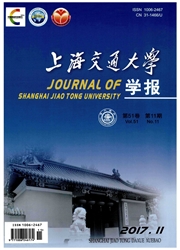

 中文摘要:
中文摘要:
建立了电火花线切割极间介质电阻模型,分析了加工能量与极间介质电导率、工件厚度之间的关系,并对极间介质电阻模型进行了实验验证.研究结果表明,随着电导率的升高或者工件厚度的增加,放电期间极间“漏电流”增大,损耗在极间介质的能量增加,加工效率降低,电导率变化导致的极间电阻改变对于加工效率的影响显著.
 英文摘要:
英文摘要:
A resistance model of (WEDM) was established. And interelectrode dielectric fluid in wire electrical discharge machining the relationship among machining energy, electrical conductivity and thickness of a workpiece was analyzed. The resistance model of interelectrode dielectric fluid was verified by experiments. The results show that with the higher electrical conductivity or the thickness of work- piece, the larger the interelectrode leakage current is during discharge, the more the energy loss in the in- terelectrode dielectric fluid, the lower the machining efficiency. Cutting efficiency is obviously influenced by the change of the resistance which is due to the change of electrical conductivity.
 同期刊论文项目
同期刊论文项目
 同项目期刊论文
同项目期刊论文
 期刊信息
期刊信息
